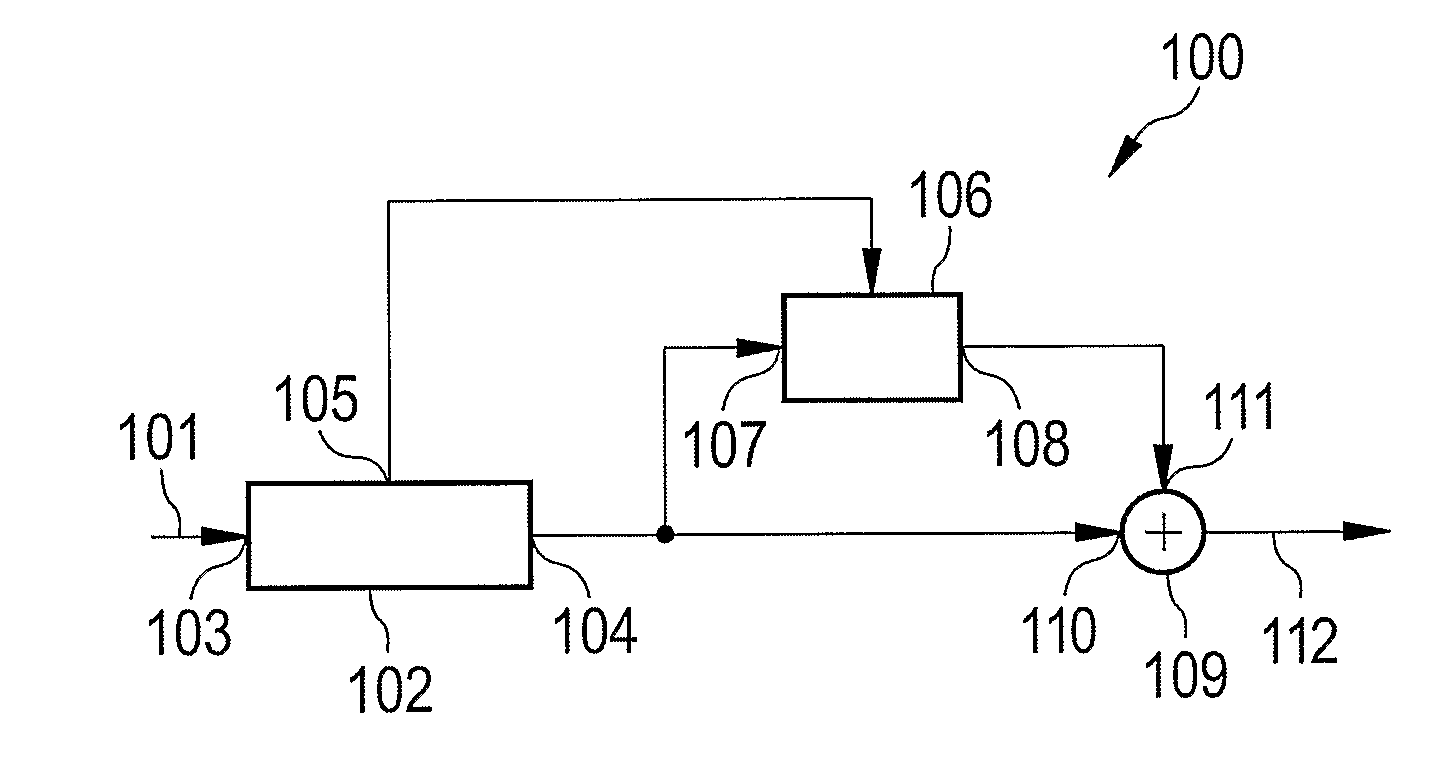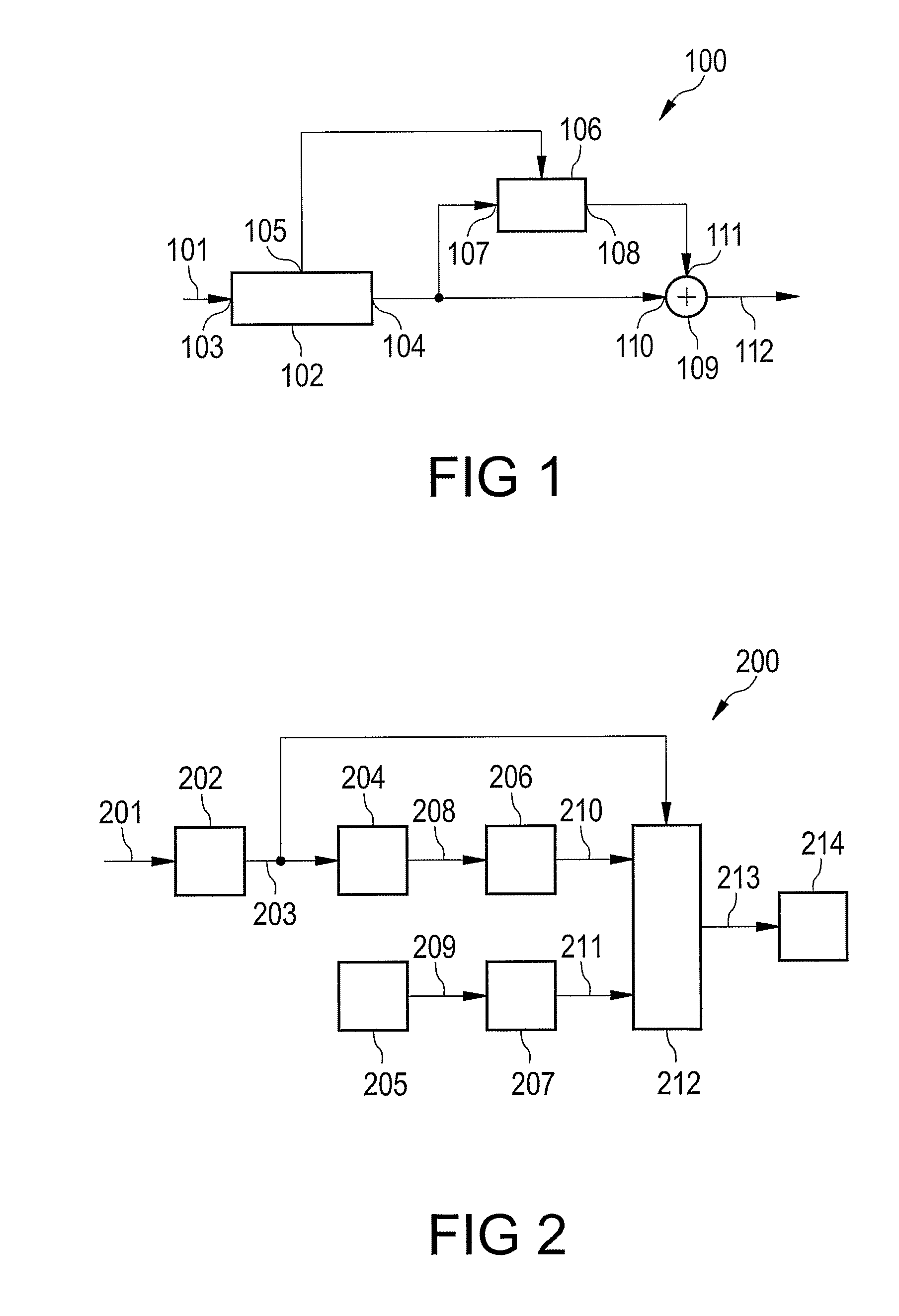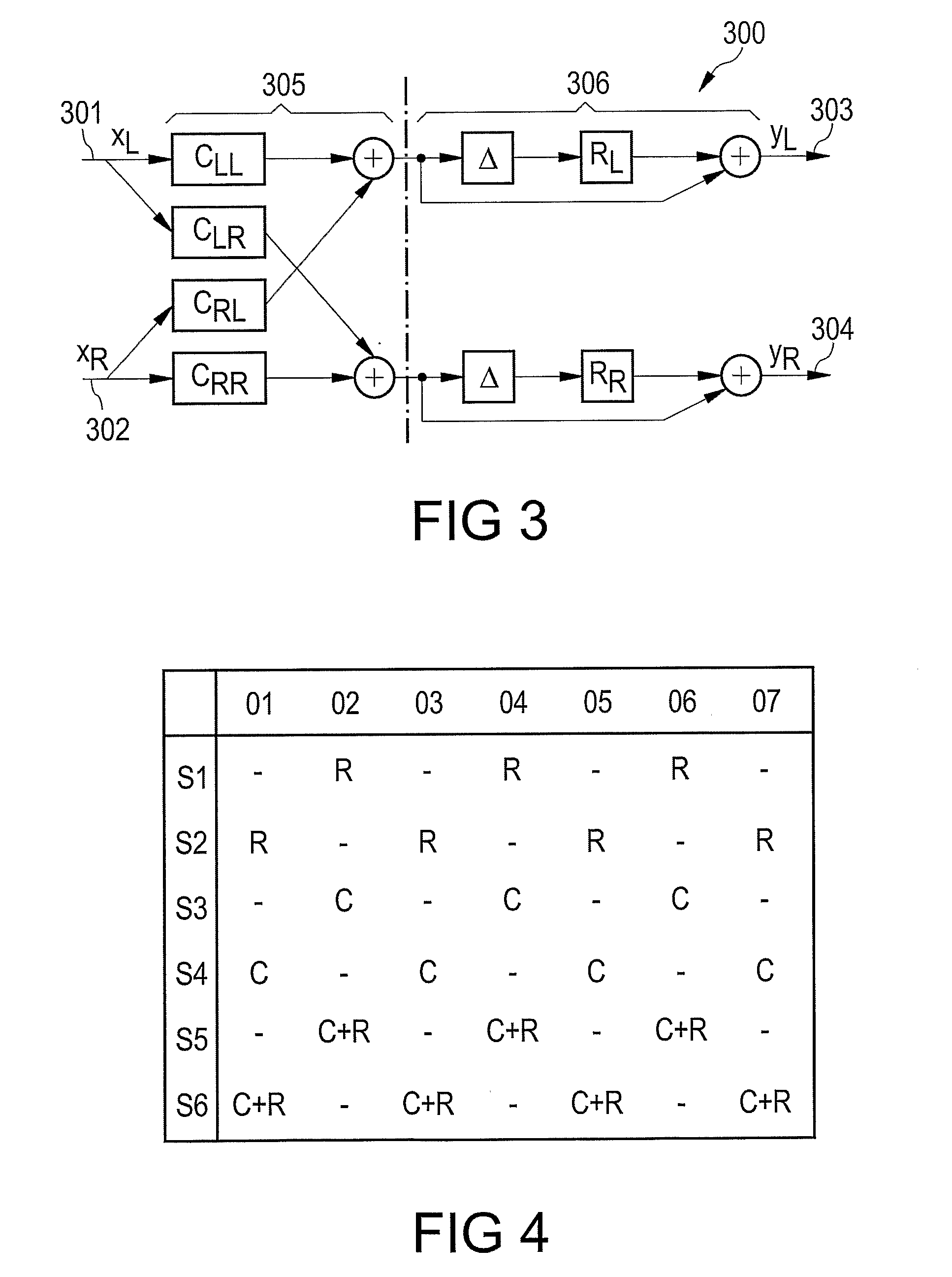System and a method of processing audio data, a program element and a computer-readable medium
a technology of audio data and program elements, applied in the field of system and method of processing audio data, can solve the problems of insufficient poor quality of audio signals processed by encoders/decoders and in particular compressed audio data, and hard work of mp3 algorithms to ensure human listeners cannot detect sounds, etc., to achieve the effect of improving the subjective quality of decoded audio data and requiring less effor
- Summary
- Abstract
- Description
- Claims
- Application Information
AI Technical Summary
Benefits of technology
Problems solved by technology
Method used
Image
Examples
first embodiment
[0068]In the following, referring to FIG. 1, a system 100 of processing audio data according to the invention will be described in detail.
[0069]The system of processing audio data 100 comprises a decoding unit in form of an audio decoder 102 (e.g. an MP3 decoder) and a reverberator unit 106 and an adding unit 109.
[0070]The audio decoder 102 is adapted to decode compressed audio data 101 provided at a compressed audio data input 103 of the audio decoder 102 to generate decoded and decompressed audio data provided at a decompressed audio data output 104. Further, the audio decoder 102 has a quality parameter output 105 at which a quality parameter (e.g. the bit-rate) indicating the quality of the processed audio data is provided. By means of the audio decoder 102 and the quality parameter output 105 first determining means are provided, which first determining means are adapted to determine properties of the decoded audio data and / or of reproduction conditions under which the decoded ...
second embodiment
[0075]In the following, referring to FIG. 2, an audio data processing device 200 according to the invention will be described.
[0076]As can be seen from FIG. 2, encoded data 201 is provided at an input of MP3 decoder 202 that decodes the encoded data 201 to provide decoded audio data 203. The decoded audio data 203 are provided to an audio data analyzing unit 204 for estimating an audio data property parameter 208, namely the bit-rate of the audio data. This audio data property parameter 208 is provided to a first determining sub-unit 206 for determining a first reverberation contribution based on the bit-rate of the audio data. Thus, a first reverberation contribution signal 210 is generated which is provided to an adding unit 212.
[0077]Simultaneously, an environmental condition analyzing unit 205 analyzes an environmental condition, i.e. the physical properties of the environment in which the audio data shall be emitted. For example, it may be detected that an environment does not ...
PUM
 Login to View More
Login to View More Abstract
Description
Claims
Application Information
 Login to View More
Login to View More - R&D
- Intellectual Property
- Life Sciences
- Materials
- Tech Scout
- Unparalleled Data Quality
- Higher Quality Content
- 60% Fewer Hallucinations
Browse by: Latest US Patents, China's latest patents, Technical Efficacy Thesaurus, Application Domain, Technology Topic, Popular Technical Reports.
© 2025 PatSnap. All rights reserved.Legal|Privacy policy|Modern Slavery Act Transparency Statement|Sitemap|About US| Contact US: help@patsnap.com



